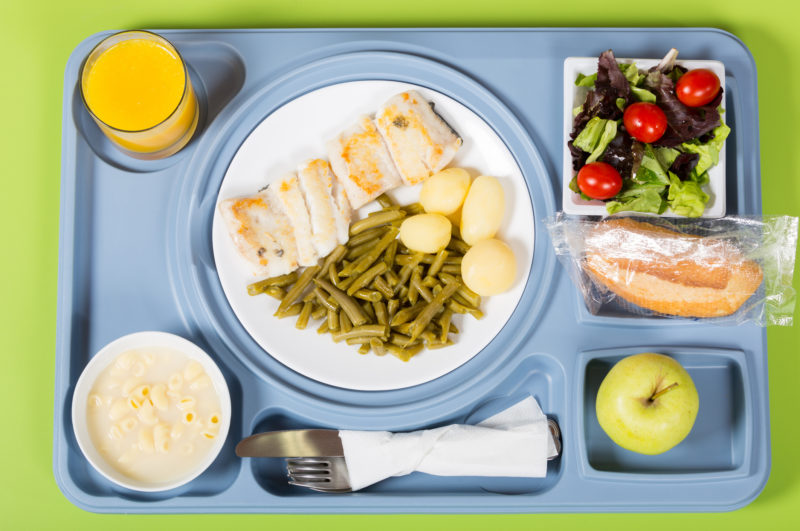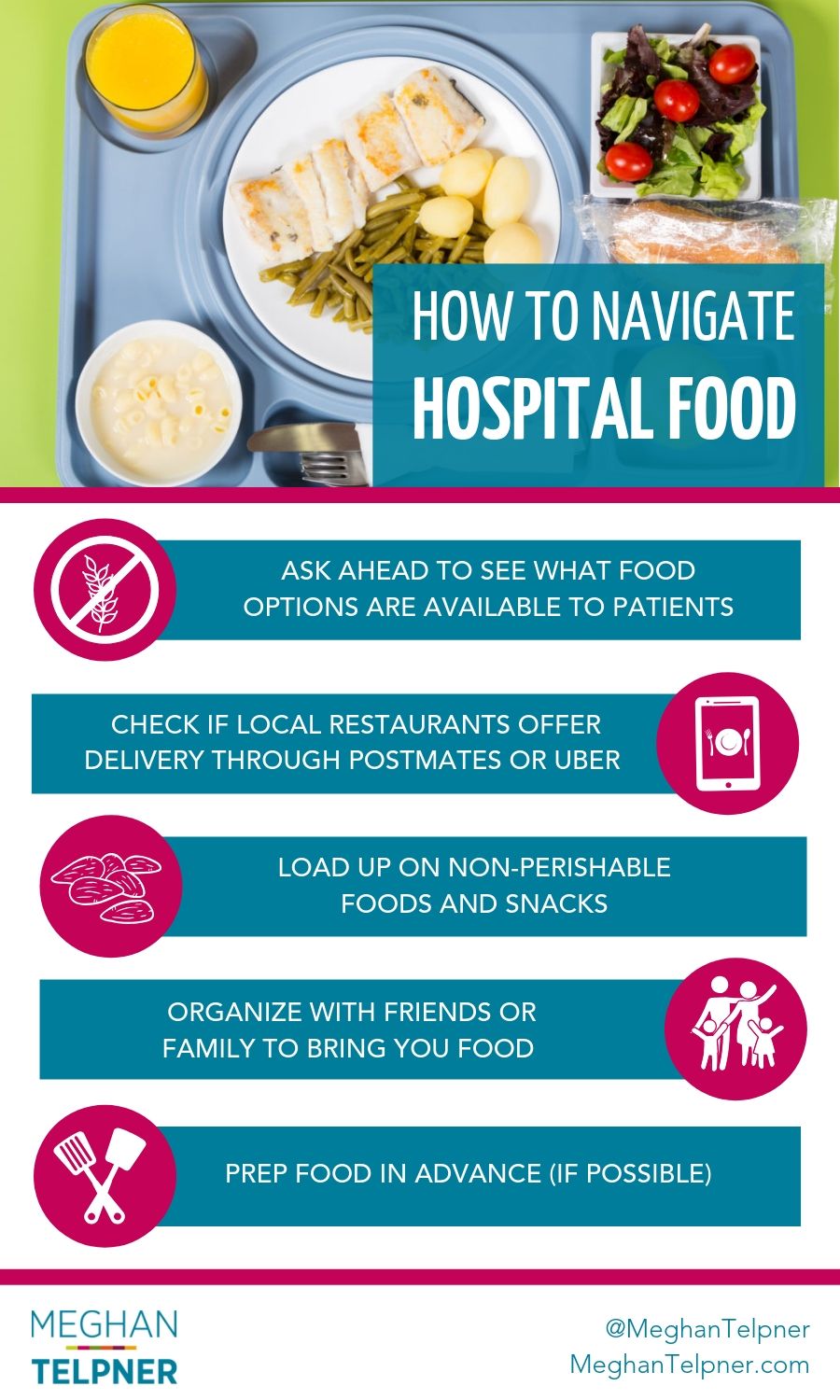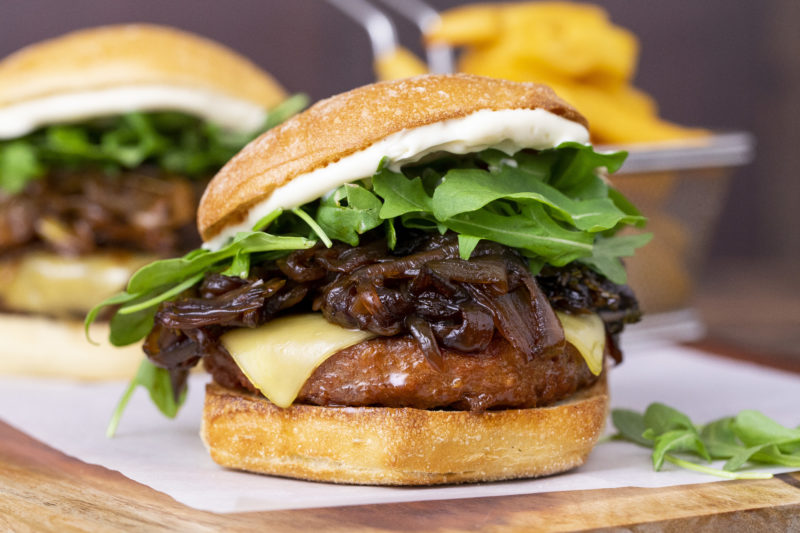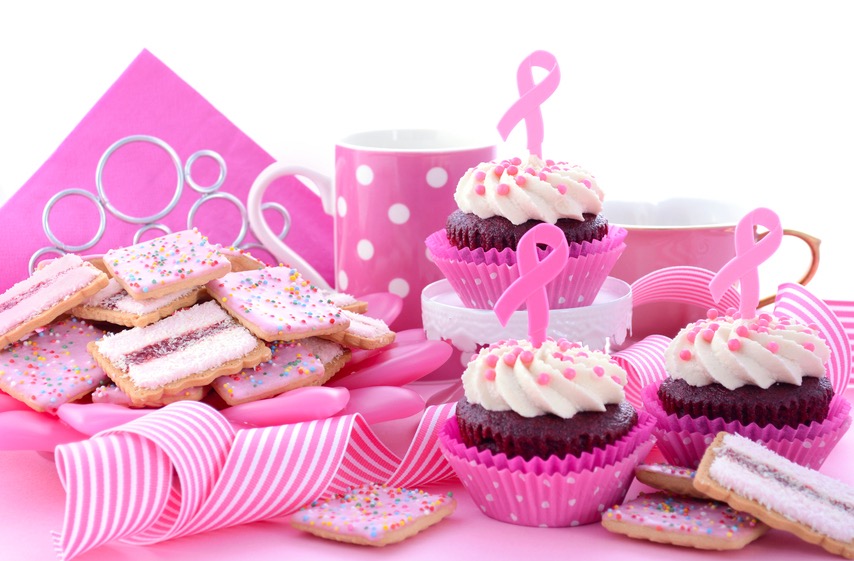Hospital Food: Navigating The System To Improve Patient Outcome

Bad hospital food is often joked about, but in truth, it’s no laughing matter. If you’ve ever experienced it, whether during an overnight/multi-night stay or when visiting a loved one, you probably already know what I’m talking about. Most hospital foods served to patients is overcooked, nutrient-deficient, highly processed, bland and often downright unpalatable. At a crucial time when vulnerable patients desperately need nutrients to heal, they are served hospital food that promotes disease or, at the very least, does not help them build or recover their health.
I basically plan never to have to be in a hospital. We’d intended on a home birth with our son, but it didn’t work out quite that way. In anticipation of potentially needing to be in the hospital, I’d packed more than just an overnight bag of clothes and personal care stuff, and I had a massive bag of food ready and set as well. I was grateful that I did when, in the morning after 26 hours of labour, I was brought a yellow muffin in a plastic package, a cup of coffee, a cream, and a packet of margarine. After that, I asked them to please not bring the meal.
I know that hospital food is a complicated subject. It’s a multi-layered problem and the solution is equally interconnected, involving government/health policy, food companies, hospital staff and patients. Hospitals are extremely busy and often underfunded places, where the staff focus on saving lives. I understand that food is not always the priority. However, if hospitals are going to take on the role of feeding their patients, we need to come up with solutions.
We know that food has an incredibly powerful role in the body and can help us to heal from a variety of chronic and acute conditions. I founded my school, the Academy of Culinary Nutrition, on this principle. A recent analysis of diet in 195 countries found that dietary improvements can help prevent 1 in 5 deaths. And that’s just on the prevention side. What happens when someone is dealing with a critical injury, surgery or other trauma? How can diet help accelerate healing to actually get people out of the hospital and back home sooner, freeing up beds and potentially helping alleviate the crowdedness of hospitals from more of a root cause solution.
What We Know About Hospital Food, food Budgets + Health
As you might imagine, the quality of hospital food is linked to money allocation and budgeting. This varies not only from country to country but within states, provinces and cities, too. In the province of Ontario, where I live, hospitals spend an average of $8-15 per person a day for three meals and snacks. However, according to one report, “labour costs generally account for 70% of a food services budget”. Most of the money is allocated to the people cooking the food, not the food itself. Employees should be fairly compensated for their labour, but does it have to be at the expense of patient health?
If a patient fails to eat due to unappetizing hospital food or because they are feeling unwell, they are more likely to lose weight. Studies show that, on average, malnourished patients stay in the hospital 2-3 days longer than nourished patients do, are more likely to be readmitted within 30 days and are at a greater risk of death. Those extra hospital days add up: a malnourished patient costs an extra $2,000, adding up to about $2 billion per year. Not to mention that about 50% of patient food is left uneaten, amounting to $45 billion a year in food waste.
A malnourished patient costs an extra $2,000, adding up to about $2 billion per year.
There are many ways that we can eat healthfully on a limited budget and reduce food waste. What could we achieve if hospitals diverted some of these funds to nourishing patients, preventing extended hospital stays and excess food waste? Investing the money up front in a supportive and healing diet can lead to cost savings in the future.
There seems to be a consensus that hospital food has serious problems, both taste-wise and from a nutritional standpoint – most governments recommended daily allowances (RDA) are low to begin with, and even hospital food isn’t meeting these meager standards. It may seem like a small thing, but delectable and nutritious food can not only improve health but boost patient satisfaction with their overall hospital experience. In one survey, patients who enjoyed their food were four times more likely to rate their hospital 10/10.
Hospital Food Menus: What’s being served?
As far as I know, after doing some digging, there aren’t any national standard regulations or guidelines about what must be served to patients in hospitals. It’s not an easy task, given the vast needs of patients who are dealing with a number of health conditions. Hospitals do work with dieticians and often follow Canada’s Food Guide, which has fallen woefully short on good nutrition for decades – often focussing on calorie intake and macronutrient ratios (a certain amount of fat, protein and carbohydrates) without as much concern to the actual source of these. Hopefully, with the revamped Canada Food Guide, recently updated in 2019 to include a focus on plant-based, home-cooked foods, perhaps we will begin to see a shift in hospital food menus.
Hospital food menus are varied. Some make a valiant effort to include fresh ingredients (more on that below) and incorporate gluten-free, dairy-free and other allergen-friendly options, while others are full of damaging processed foods like margarine, fat-free milk, deli meat, low-fat salad dressings and pop.
This is an interesting photo gallery of hospital meals from around the world here, though I do believe it is staged, as I’ve never seen a meal like the one pictured for Canada (though thanks for thinking of our health care system so idyllically!).
And apparently, in Germany, they serve a main course of vomit.

Photos by Sunbelt Staffing
Discovering where hospital food ingredients actually come from can be murky too, as one reporter found when certain hospitals flat out refused to disclose menus, recipes and ingredients. She asks, and rightly so: “Shouldn’t patients have a right to know what’s in the food they are being served in public institutions, paid for on the public’s dime?”
When you, a family member or friend are staying in a public hospital, it’s your tax dollars that are funding that care. How can we, as a society, begin to invest in our food and see its value in critical settings like hospitals, rehab centres and long-term care facilities?
Restaurants + Vending Machines in Hospitals
Aside from food that is served to the patients, hospital buildings are a minefield of unhealthy food choices, from fast food restaurants (especially in children’s hospitals!) to vending machines loaded with sugary confections, artificial flavours and colours, and salt. Fast food companies have contracts that provide hospitals with much-needed funds, but again, what is the cost? People are more likely to make food choices that are detrimental to health and these meals contribute to the very diseases that cause patients to end up in the hospital in the first place. Doctors agree with this, too.
For visitors or family members who are spending days on end with loved ones in the hospital, eating unhealthy fare impacts their energy levels and ability to be caregivers. Family may also purchase fast food or vending machine items for patients who don’t like hospital food, leading to more food waste and a diminished capacity for recovery.
Positive Hospital Food Innovations
Change is happening in hospital food, slowly but surely. Some of the initiatives hospitals and non-profits are working on include:
- partnering with chefs instead of fast food companies for balanced meals
- hiring holistic nutritionists or culinary nutrition experts for advice
- cultivating rooftop gardens for kitchen use, and gardens where patients grow plants and herbs as part of their mental and physical rehab
- working with local farmers for fresh, local produce and non-medicated animal products
- practicing sustainability and reducing food waste
- banning junk foods from hospitals
- providing culturally sensitive foods
- offering farmers’ markets on hospital grounds
You can read many more amazing suggestions and ideas for better hospital food in this infographic. Hospitals are places where patients go for health and healing. They need to advocate for good nutrition for patients, staff and visitors – not just for the bottom line, but so that they can all enjoy happy and vibrant lives.
How You Can Navigate Hospital Food
Until we see some major changes, our best course of action is to do our best to eat well, and live an optimally healthful lifestyle so we spend as little of our life in hospitals as possible. Though many hospital visits are unplanned, not all are.
If you have a scheduled procedure and know you will be spending a few days or weeks in the hospital, here is what to try:
- Prep some food in advance, and organize to have friends and family bring you meals.
- See if there are any local restaurants or food delivery services that will deliver to hospitals (Uber Eats often does!)
- Find out what options you can request as a patient from your hospital’s options.
I wish the above list could be longer, but until the system changes, in most cases, we are at the mercy of what’s on the menu for the day – off the truck, into the microwave, and served up zapped, soggy and devoid of actual nutrition.

Free Resource Library
Enjoy more than 40 downloadable guides, recipes, and resources.
























Very timely post as I just came home from 4-days in the hospital after a major invasive surgery. I was very nauseous so couldn’t think much about eating, but the food they did bring me was pretty blah. Although they managed to get me meals that were GF/DF. I am recovering now at home where I can eat all the delicious chicken soup and other goodies home made :)
Although shout out to the hospital staff at Sunnybrook who were beyond amazing in all other ways!
I’m so happy you wrote this post and I will be sharing it on my social media feeds and with the hospital I’m communicating with right now. I had a 2 night stay at a hospital in Northern Ontario, and to say the food was terrible is an understatement. Given the stress of the surgery I was undergoing, I didn’t think of prepping in advance. When I saw my first meal delivery, I knew I had to guide my husband through how to make me green smoothies and bring me the staples I needed so I could manage inflammation and support my recovery. Thank goodness for my CNE training!
The hospital I’m communicating with isn’t budging, but, to date I’ve been talking to junior and intermediate level decision makers. This post gave me the motivation to head on up the food chain!! Baby steps, but hopefully it will make a difference.
Thank you Meghan!
Unfortunately i have been in hospital twice in the past couple of years, here in Victoria BC. The first time the food was every bit as bad as described and friends kindly brought in edibles for me. However the second time, there were changes. Each day I got a menu and was able to choose. Often there were ‘ethnic’ dishes, (Indian, Chinese) Muffins were bran, and appeared to be freshly baked. Special diets appeared to be accommodated and you had a choice of butter or margarine. It wasn’t great but definitely improved.